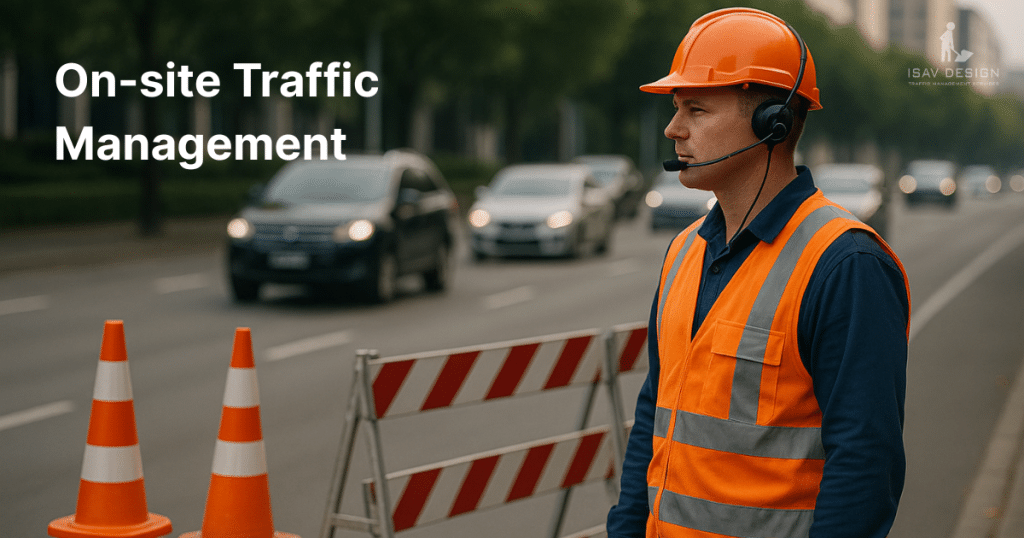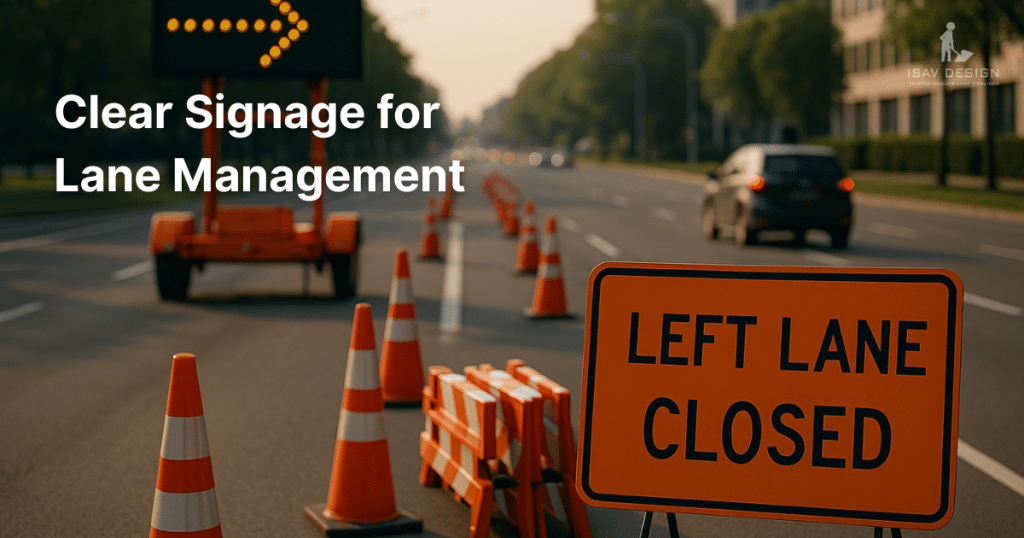
Strategic traffic management refers to the planning, coordination, and control of traffic systems to improve safety and reduce congestion. It involves a mix of policies, technologies, and infrastructure management that work together to ensure road users can move efficiently while staying safe. In New Zealand, traffic congestion and accident risks are common issues in urban areas. As cities grow and transport demands increase, managing traffic flow more carefully becomes necessary.
A balanced approach is required in NZ road safety management. It is not just about moving vehicles faster. Safety must always remain a priority. Poorly planned roads or uncontrolled traffic can lead to serious consequences. A structured traffic management plan in NZ allows planners to balance these concerns. It helps cities make the most of their existing road networks while keeping people safe.

Traffic congestion often happens when vehicles exceed the road’s capacity. However, the problem is rarely caused by one factor. Common causes include population growth, increased car ownership, poor traffic signal timing, and delays caused by accidents.
Congestion affects travel time, fuel use, air quality, and stress levels for drivers. In busy parts of New Zealand, daily congestion causes delays that impact work schedules, goods delivery, and even emergency services.
Widening roads or building new ones is not always a practical solution. Land availability, budget constraints, and environmental impact make expanding infrastructure in many areas difficult.
Cities can look at traffic engineering solutions that make better use of what they already have. Examples include signal coordination, vehicle restrictions during peak hours, and encouraging alternative transport options like cycling or public transport. These strategies can ease pressure without the need for large-scale construction.
ITS technologies help traffic management services monitor and respond to changes on the road. These systems include tools like live traffic cameras, real-time travel updates, and automated traffic signals. When used together, they allow quick adjustments to improve flow. For example, adaptive signal control can change green light timings based on traffic volumes. ITS also assists in collecting valuable data that city planners can use to make long-term improvements.

Accidents often occur in the exact locations. These areas are called blackspots. They may involve complex intersections, poor lighting, or limited visibility. Local councils and traffic engineers must review crash data regularly to identify where these risks exist. Once located, targeted improvements such as better signage, more apparent markings, or barrier installations can lower the chances of future accidents.
Speed contributes to both the frequency and severity of road crashes. Controlling speed in high-risk areas can save lives. Speed humps, raised pedestrian crossings, and speed cameras are all standard tools. Reducing speed limits in school zones, residential streets, and busy urban areas has proven effective in many New Zealand regions. These traffic control strategies reduce crash impact and improve pedestrian safety.
Clear signage and markings give road users the information they need to drive safely. If signs are unclear or faded, drivers hesitate or turn incorrectly. Road markings guide movement, show lane changes and help separate vehicle types. Regular maintenance of these visual cues supports better traffic behaviour and helps prevent confusion, especially in busy intersections or during poor weather conditions.
Some cities in New Zealand have already seen success by focusing on thoughtful traffic planning. For example, Christchurch implemented speed management zones in high pedestrian areas, which led to a noticeable drop in crash rates. In Auckland, the installation of red-light cameras at selected intersections helped reduce the number of severe collisions. These examples show how targeted changes can improve public safety without requiring massive changes to infrastructure.
Roundabouts and traffic signals serve the same purpose but work in different ways. Roundabouts keep vehicles moving, which helps reduce delays and idling. They also lower the chance of serious crashes because cars move at slower speeds.
Traffic lights, however, can handle larger traffic volumes at multi-lane intersections. The best option depends on the road layout, nearby traffic conditions, and safety needs.
In New Zealand, more minor intersections often benefit from roundabouts, while high-traffic areas may require lights for better coordination.
Smart intersections use sensors and data to adjust traffic signals in real time. These systems can respond to changes in flow, detect traffic build-up, and clear backlogs faster than fixed-timer signals. In cities like Wellington, trials have started using AI-based signal control to prioritise buses and emergency vehicles. These technologies can improve efficiency and lower emissions by reducing time spent idling at red lights.
Lane management prioritises specific vehicles or adjusts road use based on the time of day. Reversible lanes shift direction during peak hours to handle changing traffic volumes. High-occupancy vehicle (HOV) lanes encourage carpooling, while bus-only lanes support public transport reliability. These approaches can reduce single-occupancy cars and help keep roads flowing. In Auckland, bus lanes have reduced delays and improved journey times for commuters.
Pedestrian-friendly design plays a key role in NZ’s road safety management. Marked crosswalks with clear signs, signal buttons, and sufficient crossing time help people move safely across roads. Footbridges or underpasses may be necessary in busy corridors. Adjusting signal timing to allow slower walkers, such as older adults or school children, adds further protection. These small changes contribute to a safer environment for all road users.

A TMP outlines how traffic will be controlled during construction. It includes steps to protect workers, guide vehicles, and minimise disruption. A traffic management plan in NZ must follow the standards set by the New Zealand Guide to Temporary Traffic Management (NZGTTM). It should assess the work site, predict traffic impact, and define methods for managing flow. Good planning avoids confusion and supports safety for drivers and workers alike.
Road closures are sometimes necessary but need clear communication. Signage should be placed well in advance, and detour routes must be easy to follow. It helps to use variable message boards to give live updates about delays or alternative paths. Timing the closures during off-peak hours or weekends can reduce disruptions. Coordinating with emergency services and public transport providers also helps maintain essential access.
Public events such as festivals, sports games, or parades create temporary traffic changes. Planning ahead is key to reducing issues. Event organisers should work with traffic management services to assess expected crowd sizes, parking needs, and likely congestion points. Temporary barriers, marshals, and signs all play a part in keeping movement orderly. Event-specific TMPs ensure that the public stays informed and emergency access remains available throughout the event.
Traffic management strategies aim to improve how vehicles move and lower the chances of road accidents. These strategies may include congestion pricing, bright traffic lights, restricted access zones, or dedicated lanes. They are chosen based on local conditions, traffic patterns, and safety goals.
A traffic management program is a structured approach that helps manage the flow of vehicles and improve safety. It combines traffic control tools, policies, and monitoring systems. These programs are often led by local councils, road authorities, or specialised traffic engineering firms. Their work includes planning, analysis, and on-site traffic control during maintenance or major events.
A well-organised traffic management plan in NZ does more than reduce congestion. It plays a key role in NZ’s road safety management by helping prevent accidents and keeping roads efficient. Whether through better signage, smarter signals, or temporary solutions during work, each effort counts towards making streets safer and more reliable.
By focusing on proper planning, data-driven decision-making, and modern traffic control tools, New Zealand cities can address current challenges and prepare for future growth. With traffic management services adapting to both local and national needs, planners and decision-makers have access to practical ways to improve traffic flow while protecting public safety.